Disclaimer: Although this article contains sarcasm and nuance, it is based on carefully researched academia, with a fully cited reference list below.
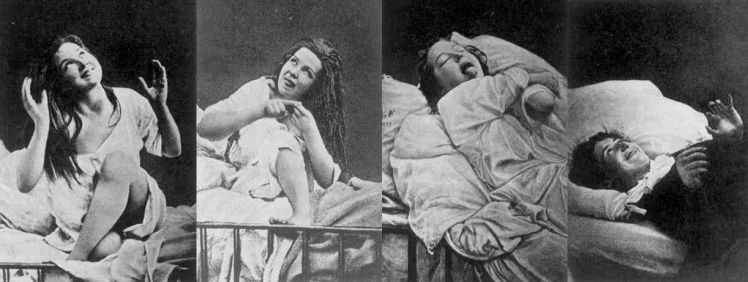
Welcome, Welcome!
Whether it be a friend, family, foe, ex-lover, teacher, classmate, colleague, or yourself, we’ve most likely encountered (or unfortunately most likely will encounter) mental illness in our lifetime. These often painful and trying times can be incredibly isolating for those involved. Many seek solace in the idea that they are not alone: that there are others who have similar experiences, that have been where they have been, and that have felt what they have felt. Have you ever wondered about the mental health experiences of ancient women? Well…don’t hold your breath.
Now, Let’s Get Into It…
To say that women in the ancient Mediterranean world lacked agency in the understanding of their bodies is an understatement. Now, they did have some forms of agency however, nothing compared to that of a man (apples and oranges, folks). Although there were women involved in medical practices (hurrah-hurrah for wet-nurses and midwives) the socially constructed gender roles and misconceptions of female nature subdued any deep physiological understanding by both men and women (Lefkowitz & Fant, 1997). In fact, women in the ancient Greek and Roman world experienced mental illnesses similarly to the way in which men did, but the female anatomy was manipulated to reflect socially gendered ideas of female nature. You guessed it! The female nature was to be weak and ruled by the sexually crazed beast that lay deep inside a women’s vagina. Oops, I meant free-roaming, sex-demon-infested, blood-spouting, howls-at-the-moon-and-tides uterus. But, we’ll get to that later.
Where Do We Stand Today?
To make sure we are all on the same page, let’s review some PSYCH101.
On female anatomy: (source, Crash Course, Youtube)
On psychological disorders: (source: Crash Course, Youtube)
On evolving modern approaches and understandings of mental illness: (source: Thomas Insel, TED)
General Approaches to Mental Illness in Ancient Greece and Rome
Mental illnesses were examined mostly through empirical, religious, and, ultimately, physiological interpretations by medical practitioners of the ancient world (Drabkin, 1955, p. 225). This meant that ancient writers (for clarity’s sake, male writers) diagnosed and treated women based on how they interpreted the workings of their bodies. These interpretations were based on non-invasive, pre-dissection methods of understand health: so, they mostly interpreted through their sensory experience and socially-constructed ideas of female nature. Now, I bet you’re thinking, “Quite the formula they’ve got there,”. Well folks, buckle up.
Link to a timeline of the main doctors who studied female gendered mental illnesses
The most influential medical doctors and authors of ancient Greece and Rome that studied mental illness, particularly that of women, were Hippocrates, Plato, Soranus, and Galen (Drabkin, 1955). The Hippocratic Corpus of the fifth century B.C.E and its medical tradition highly influenced and essentially formed the basis for medical practices of the ancient Mediterranean (Drabkin, 1955). Plato was one of the most influential philosophers and academics of the ancient world and his dialogue Timaeus contains important insights into ancient ideas of female anatomy (Adair, 1995). Soranus and Galen were two later medical authors and practitioners; practicing in the second century CE, these authors demonstrated the evolution and departure from medical practices of the Hippocratic Corpus and Platonic ideas (Faraone, 2011).

Notably, the four humor theory discussed in the Hippocratic Corpus dominated medical practices for centuries: the concept that illness was caused by any excess or imbalance of the four humours, blood, phlegm, yellow bile, and black bile. According to Drabkin (1955), this idea translated into the ancient doctors’ understanding of mental illnesses: “[…] due to the deleterious effect produced on the brain and its pneuma by unbalanced combinations of the basic qualities of heat, cold, dryness, and moisture; that this imbalance is due, in turn, to an imbalance in the quality-carrying bodily humors […] and that the type of mental disease depends on the faculty or faculties affected and the nature and degree of the affection,” (p. 230).
This theory of balance had roots in fifth century Pre-Socratic ideas of physiological harmony of the elements; the influence of which can be seen in the interpretations of elemental authority within the female anatomy (Lefkowitz & Fant, 1997). Furthermore, religious interpretations of mental illnesses were common as a means of rationalizing the empirically inexplicable (Lefkowitz & Fant, 1997).
The main ancient treatments recommended for mental illnesses were of a somatic nature: massage, diet, cupping, ointments, exercise, purges, bathing, etc (Drabkin, 1955, p. 232-233). Interestingly, there were also psychotherapeutic measures to treat patients which included: tidy sickrooms, visiting restrictions, mental exercise, philosophical discussions, and musical therapy (Drabkin, 1955, p. 232-233). Promoted by many ancient physicians, violent and radical treatments of mental disease were very common and involved practices of flogging, bleeding, purging, and starvation (Drabkin, 1955, p. 232-233).
Approaches to Mental Illness in Women
The approach to mental illnesses in women in Greece and Rome during antiquity was entirely different to that of the approach to men’s mental illnesses. Few written records exist today of women’s understanding of female bodily functions such as menstruation, childbirth, nursing, and menopause in antiquity, as they were most commonly transmitted through an oral tradition (Lefkowitz & Fant, 1997, p. 85). Ancient doctors were primarily concerned with diseases and typically only detailed the physiology of women when it related to illness (Lefkowitz & Fant, 1997, p. 85). Furthermore, “social norms, such as men’s superiority over women, could provide acceptable ‘data’ about human reproductive systems,” (Lefkowitz & Fant, 1997, p. 82). In turn, as the natures of mental illnesses were physiologically based, it quickly became a gendered field. This meant that there were mental illnesses which were defined and understood as unique to the female mind and body (Adair, 1995). Women’s lack of agency in the understanding and medical knowledge of their own bodies (some might note socially constructed exclusion from) greatly contributed to misinterpretations and mistreatments of their mental illnesses.
Female Gendered Mental Illnesses
There were three main female gendered mental illnesses in ancient Greece and Rome: the wandering womb, hysteria, and menstrual retention. It is important to stress that these mental illnesses were based on physiological interpretations of psychological symptoms (Drabkin, 1955).
The Wandering Womb
The diagnosis of a wandering womb (or uterus) was based on the idea that the womb would dislocate from its position and travel independently inside a woman (Faraone, 2011). This dislocation and movement of the womb was typically rationalized as the root of all mental illness in women, as the womb was thought to push against varying parts of a woman’s innards causing different mental reactions (Faraone, 2011). These mental reactions included suffocation, delusions, and hysteria (Faraone, 2011). Suffocation was, in fact, a spasmodic illness most likely a stroke or a form of epilepsy. However, its classified here as a mental illness because at the time it was misunderstood as a physiological disease and treated as a psychological one (Faraone, 2011, p. 9-10).
The idea of the wandering womb had its origins in ancient Egypt (Thompson & Bullough, 1999, p. 31). An early Egyptian text, the Kahun papyrus, described a “fallen womb”, one that could dislocate and travel the body causing illness (Thompson & Bullough, 1999, p. 31).
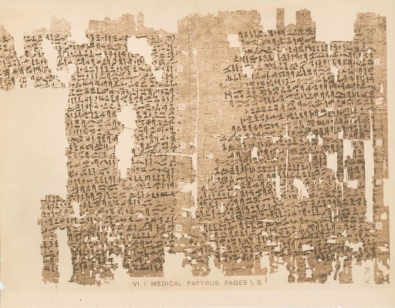
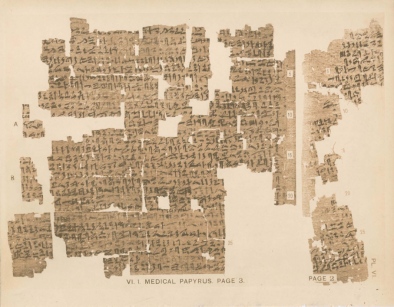
Ancient Egyptian doctors treated the wandering womb by burning substances near the head to move the womb downwards and then placed aromatic bowls near the pelvis to draw the womb downwards—a method of fumigation (Thompson & Bullough, 1999, p. 32-33). This is in fact very similar to the methods of treatment recommended by Hippocratic authors when discussing a dislocated womb.
“You should fumigate her under her nose, burning some wool and adding to the fire some asphalt, castoreum, sulfur and pitch. Rub her groin and the interior of her thighs with a very sweet-smelling unguent.” Hippocratic Author, Diseases of Women 1.221
Hippocratic texts were essential to the understanding of the nature of the wandering womb and influenced the great medical practitioners of the following centuries. A Hippocratic author describes movements of a dislocated womb: “If her womb moves towards her hips, her periods stop coming, and pain develops in her lower stomach and abdomen […] When her womb moves towards her liver she suddenly loses her voice and her teeth chatter and her colouring turns dark,” (Lefkowitz & Fant, 1997, p. 94). Plato followed the nature of this theory however, goes further in his interpretation of the wandering womb by describing it as an independent animal. Plato described these ideas in his dialogue Timaeus: “Hence it is that in men the privy member is disobedient and self-willed, like a creature that will not listen to reason, and because of frenzied appetite [is] bent upon carrying all before it. In women again,for the same reason, what is called the mat or womb, a living creature within them with a desire for child-bearing, if it be left lo unfruitful beyond the due season, is vexed and aggrieved, and wandering through the body and blocking the channels of the breath, by forbidding respiration brings sufferer to extreme distress and causes all manner of disorders; until at last the Eros of the one and the Desire of the other bring the pair together, pluck as it we the fruit from the tree and sow the ploughland of the womb with living creatures still unformed and too small to be seen […],” (Adair, 1995, p. 154-155).
“[…] what is called the mat or womb, a living creature within them with a desire for child-bearing, if it be left lo unfruitful beyond the due season, is vexed and aggrieved, and wandering through the body and blocking the channels of the breath, by forbidding respiration brings sufferer to extreme distress and causes all manner of disorders […]” Plato, Timaeus 91 b- c
Plato re-interpreted the womb as not only wandering and causing physical and mental illnesses but attributes its causes of ill health to the psychological explanation of sexual desire and frustration (Adair, 1995, p. 154). He noted that this sexual desire resulted in hysterical somatic symptoms in women (Adair, 1995, p. 163). Furthermore, in Timaeus Plato presented the wandering womb as a counterpart to the penile organ which does not migrate within the body (Adair, 1995, p. 157). This contrast of organs is directly related to the gendered conceptions of mental and, in this case sexual, stability (Adair, 1995, p. 157).
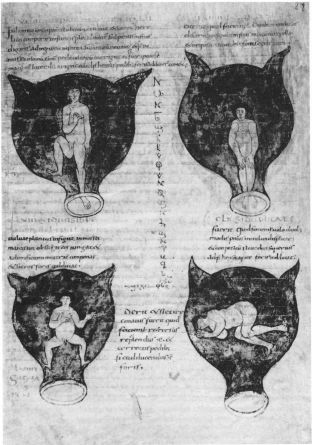
Soranus of Ephesus, a physician writing during the second century A.D., dismisses the idea of a wandering womb and the fumigation methods of healing (Faraone, 2011, p. 8). However, the doctor maintained that although the uterus was attached by ligaments, it held the potential to shift and cause seizures and suffocation (Faraone, 2011, p. 8). A near contemporary of Soranus, the Roman doctor Galen, also dismissed the Hippocratic idea of an independently mobile womb (Faraone, 2011, p. 8). Galen, however, supported the ancient Egyptian and Hippocratic remedy of fumigating the extremities of a womb to cure its wanderings (Faraone, 2011, p. 8). The wandering womb was later altogether dismissed as a theory in texts and studies following Galen and the practices of dissection (Faraone, 2011, p. 9).
As aforementioned, suffocation as a mental illness associated with the wandering womb did not illustrate signs of psychiatric ill health but the physiological symptoms were interpreted as such (Faraone, 2011, p. 9-10). A Hippocratic text describes the ancient illness (Lefkowitz & Fant, 1997, p. 93):
“When the womb remains in the upper abdomen, the suffocation is similar to that caused by the purgative hellebore, with stiff breathing and sharp pains in the heart. Some women spit acid saliva, and their mouths are full of fluid, and their legs become cold. In such cases if the womb does not leave the upper abdomen directly, the women lose their voices, and their head and tongue are overcome by drowsiness.” Hippocratic Author, Hysterical suffocation, Diseases of Women 2.126, 123
According to Galen, “[…] hysterical suffocation affected ‘those who have previously menstruated regularly, had been pregnant and were eager to have intercourse, but were now deprived of all this.’ This deprivation resulted in repressed menstrual flow which in turn ‘caused the uterine condition by which… women become… suffocated or spastic,’” (Thompson & Bullough, 1999, p. 36). The psychological association to suffocation is through its interpretation as being caused by demonic possessions and its main treatment of exorcism (Faraone, 2011). Detailed in many Hippocratic texts, Faraone (2011) summarizes these exorcisms as such: “[…] from the invisible assaults of a god or demon, and therefore they sought cures from the realm of ritual, for example, by sacrificing to angry gods, by burning incense and immersing the patients in special baths, or by singing incantations to drive away an attacking demon,” (p. 10). Suffocation and the possession of a demon is interpreted as an illness of the mind as the demon possessed the soul and the concepts of the soul and the mind were not necessarily distinct of each other (Faraone, 2011) (Drabkin, 1955, p. 225).
Hysteria
In ancient Greece and Rome, medical practitioners and authors believed that the mental illness hysteria was caused by the wandering womb (Adair, 1995, p. 153). This tradition passed from Hippocratic texts, however the attribution of its cause to the wandering womb was similarly dismissed along with the concept itself during the second century CE, with practitioners such as Soranus and Galen (Lefkowitz & Fant, 1997). Hysteria as an illness grew in popularity and its cause was directly related to female anatomy, and became associated with the womb and uterus primarily through women’s sexuality (Thompson & Bullough, 1999, p. 23).

However, Plato first introduced this sexual hysterical theory through the context of the wandering womb (Adair, 1995, p. 163). Adair (1955) describes it as: “He attributed the disease to an impulse arising from the uterus, the cpov el’t0znqXtcOV [sic] (the sexual appetitive impulse), which, frustrated in its natural aims, wanders around the body, and its ruthless pressure for satisfaction distresses the woman, and caused hysterical somatic symptoms,” (p. 163). Abandoning the traditional wandering womb explanation, Galen used a deductive analysis to diagnose hysteria as psychological in origin: “I was called in to see a woman who was stated to be sleepless at night and to lie tossing about from one position to another […] After i had diagnosed that there was no bodily trouble, and that the woman was suffering from some mental uneasiness […] Thus i found out that the woman was in love with Pylades […],” (Lefkowitz & Fant, 1997, p. 233).
The treatments for hysteria included some treatments of fumigation for the wandering womb, traditional mental therapies, and the recommendation for sexual intercourse, bearing children, or marriage (Faraone, 2011, p. 4). Faraone (2011) describes the cyclical nature of the effects of gendered social norms and female health: “The alleged ability of the womb to move about, in short, provides an excellent justification for the patriarchal ideal of a woman’s life: early marriage and multiple pregnancies,” (p. 5).
Podcast:
“#160 Hysteria”, In Our Time: Science (source: BBC Radio 4, Itunes)
Menstrual Retention or Green Sickness
Retention of the menses was another female gendered mental illness which grew in popularity from Hippocratic texts as a diagnosis for mental instability (Lefkowitz & Fant, 1997). It was primarily associated with young women as it related to the inability to excrete menstrual blood (Lefkowitz & Fant, 1997). Menstrual retention was often associated with mental inflictions such as, erratic behaviour, mania, and suicide (Lefkowitz & Fant, 1997). Its main cures were similar to that of hysteria as it was considered the ‘hysteria of youth’: recommendations of sexual intercourse, bearing children, and marriage (Lefkowitz & Fant, 1997) (Faraone, 2011, p. 4). When associated with older women it maintained its association with the sexual nature of female anatomy in that it was considered more likely to occur in sterile or sexually inactive women (Lefkowitz & Fant, 1997). One of the most important texts on this matter is a Hippocratic text which describes the hysteria of virgins:
“As a result of visions, many people choke to death, more women than men, for the nature of women is less courageous and is weaker. And virgins who do not take a husband at the appropriate time for marriage experience these visions more frequently, especially at the time of their first monthly period, although previously they have had no such bad dreams of this sort. For after the first period the blood collects in the womb in preparation to flow out; but when the mouth of the egress is not opened up, and more blood flows into the womb on account of the body’s nourishment of it and its growth, then the blood which has no place to flow out, because of its abundance, rushes up to the heart and the lungs; and when these are filled with blood, the heart becomes sluggish, and then, because of the sluggishness, numb and then, because of the numbness, insanity takes hold of the woman… When these places are filled with blood, shivering sets in with fevers. They call these ‘erratic fevers’. When this is the state of affairs, the girl goes crazy because of the violent inflammation, and she becomes murderous because of the decay and is afraid and fearful because of the darkness. The girls try to choke themselves because of the pressure on their hearts; their will, distraught and anguished because of the bad condition of the blood forces evil on itself. In some cases the girl says dreadful things: [the visions] order her to jump and throw herself into wells and drown, as if this were good for her and served some useful purpose… The fact is that the disorder is cured when nothing impedes the downward flow of blood. My prescription is that when virgins experience this trouble, they should cohabit with a man as quickly as possible. If they become pregnant, they will be cured. If they don’t do this, either they will succumb at the onset of puberty or a little later, unless they catch another disease. Among married women, those who are sterile are more likely to suffer what I have described.” Hippocratic Author, Hysteria in Virgins, On Virgins VIII
So ladies, now you know. If you’re feeling blue, overly sexually-driven, or experiencing a psychotic break, it’s probably just your period.
Post-Antiquity
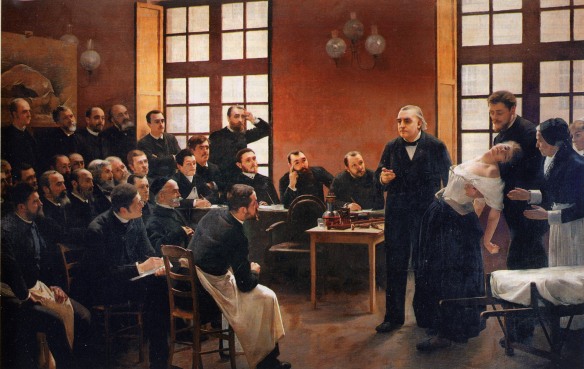
The interpretation of mental disorders as gendered health issues was not exclusive to Ancient Greece and Rome (Thompson & Bullough, 1999). Although the wandering womb was generally dismissed as a medical diagnosis due to autopsies, hysteria was more widely adopted as a diagnosis for mental illness in women (Lefkowitz & Fant, 1997) (Thompson & Bullough, 1999, p. 23). The treatments for hysteria evolved and were commonly practiced up until the Victorian era (Thompson & Bullough, 1999). One of the biggest proponents of hysteria as an illness was the famous psychologist Sigmund Freud (Thompson & Bullough, 1999). Thompson and Bullough (1999) describe its reality in the nineteenth century: “The gender-specific physical cause of insanity was ‘a defect in the ovarian or uterine system which produced secondary symptoms of disorganization and hysteria… Menstruating and giving birth, and lactating were identified as primary causes of secondary insanity in women,”’ (p. 132). Evidently, ancient Greek and Roman medical practices concerning mental illness of women were powerful and influenced medical practices for centuries.
What was “Female Hysteria,” really? (source: Big Think, Youtube)
Modern Media
Recent films which depict doctors studying ‘hysteria’ and their relationships with patients being treated for ‘hysteria’:
Hysteria (2011) (source: Youtube)
Augustine (2013) (source: Youtube)
A Dangerous Method (2011) (source: Youtube)
Recommendations for Further Reading
Online Sources:
- Overview of Ancient Greek Medicine
- Hippocrates
- Soranus of Ephesus
- Galen
- Jean-Martin Charcot
- Sigmund Freud and Psychoanalysis
- Salpetriere Hospital Records
Academic books and journals:
-
Adair, M. J. (1995). Plato’s View of the “Wandering Uterus.” The Classical Journal, 91(2), 153–163. Retrieved from http://www.jstor.org/stable/3298478
-
Drabkin, I. E. (1955). Remarks on ancient Psychopathology. Isis, 46(3), 223–234. doi:10.1086/348407
- Fantham, E. (1994). Women in the classical world : Image and text. New York: Oxford University Press. http://catdir.loc.gov/catdir/enhancements/fy0636/92047284-t.html
-
Faraone, C. A. (2011). Magical and medical approaches to the wandering womb in the ancient Greek world. Classical Antiquity, 30(1), 1–32. doi:10.1525/ca.2011.30.1.1
- King, H. (2011). Galen and the widow. Towards a history of therapeutic masturbation in ancient gynaecology. EuGeStA: Journal on Gender Studies in Antiquity, [online] 1, pp.205-235. Available at: http://eugesta.recherche.univ-lille3.fr/revue/pdf/2011/King.pdf
- James, S. L., & Dillon, S. (2012). A companion to women in the ancient world (Blackwell companions to the ancient world. Ancient history; Blackwell companions to the ancient world, Ancient history.5867853). Malden, MA: Wiley-Blackwell.
-
Lefkowitz, M. R., & Fant, M. B. (1997). Women’s life in Greece & Rome: A source book in translation (2nd ed.). London: Gerald Duckworth & Co.
-
Longrigg, J. (1998). Greek medicine : From the heroic to the Hellenistic age : a source book. New York: Routledge.
-
Thompson, L., & Bullough, V. L. (1999). The wandering womb: A cultural history of outrageous beliefs about women. New York, NY, United States: Prometheus Books.
References
Adair, M. J. (1995). Plato’s View of the “Wandering Uterus.” The Classical Journal, 91(2), 153–163. Retrieved from http://www.jstor.org/stable/3298478
Drabkin, I. E. (1955). Remarks on ancient Psychopathology. Isis, 46(3), 223–234. doi:10.1086/348407
Faraone, C. A. (2011). Magical and medical approaches to the wandering womb in the ancient Greek world. Classical Antiquity, 30(1), 1–32. doi:10.1525/ca.2011.30.1.1
Lefkowitz, M. R., & Fant, M. B. (1997). Women’s life in Greece & Rome: A source book in translation (2nd ed.). London: Gerald Duckworth & Co.
Thompson, L., & Bullough, V. L. (1999). The wandering womb: A cultural history of outrageous beliefs about women. New York, NY, United States: Prometheus Books.
I actually love the modern media section, it added a new perspective to your research. The use of podcasts and photos and videos really added an interactive aspect to your website too. I would have liked it if you’d talked about menstrual retention and maybe given a modern day reason for that to have happened. Were they just not at puberty yet? How is it possible to “retain” menstrual bleeding if you’re not pregnant? It isn’t something we can hold in. If you can find this information I think it would be good to add.
LikeLiked by 1 person
I found your blog post incredibly interesting! I know we went over this in class a little bit, but it was great learning so much more about the topic. Going along with that, I have to first say that I could definitely tell that you did your research, and that you know your topic well!
This is partly because of the many quotes you included; by including the words from the ancient authors themselves, it was that much easier to truly delve into their mindset, and see what these ancient men believed concerning women and their bodies.
One aspect, that of the four tumours, really interested me. I had been taught this a previous Medieval course, however I had no idea that the origins came from Hippocrates in the fifth century! Like you said at the end of your post, it’s pretty astounding that such beliefs influenced medicine, etc. for so many centuries after they were conceived.
Overall, I thought that your inclusion of videos, timelines (great idea!), and your general tone added a lot to your work. The only constructive criticism that I was going to mention was perhaps the amount of videos you had included, but really, you can never have too many videos!
LikeLiked by 1 person
This is such an engaging article! I love the added humour – I giggled quite a lot but also remained engaged with the topic. Your article is very thorough, I enjoy the many perspectives it offers on hysteria. I definitely spend longer than I expected to on your webpage, I watched all your videos and they really add to your personally written article. I was surprised to learn that Freud was a proponent of hysteria, I expected more from him.
In addition to making me giggle, I also became quite angry reading your webpage. I have a tendency to get annoyed when men make decisions about women’s bodies without their consideration or input. All three of these mental illnesses are incorrect and if women had the opportunity to study and report on their own bodies then proper treatments could have been created. Instead women, many of which are likely just PMSing, are labelled as seriously mentally ill. Sometimes I think it’d be cool to live in ancient times but then I think of the treatment of women and I change my mind.
I’m definitely going to watch one of your movies that you linked, this topic is so interesting and the movies look so good!
Thanks for this blog – honestly, I enjoyed reading it. If I stumbled upon this while browsing the web I’d read it for fun!
LikeLiked by 1 person
This page is totally awesome! I thought it was really well laid-out, and clear yet comprehensive. I also really loved the light yet informative tone throughout -I laughed out loud!
I thought the discussion of the three specific illnesses was really interesting, especially for highlighting the common themes within the interpretations of women’s health in antiquity. It was actually a little frightening because I can see a few areas where remains of these interpretations are still visible, such as in the fact that modern-day women having heart attacks and strokes are actually very frequently sent home from the emergency room and told that they’re ‘just anxious’ or that they’re having panic attacks, which is similar to the theme of physiological disorders being diagnosed as psychological!
In view of everything we’ve learned in class, I found the suggested treatments for these disorders equally interesting, as those that don’t require a male doctor, still required finding a husband, having sex, or getting pregnant, all of which would force women closer to becoming a wife/mother of Greek or Roman citizens of the state.
I also really loved how this page is set up so that you can either engage with it a little (have a browse through the desired sections), or engage with it a lot (watch the videos, listen to the podcast, watch the movies advertised, and do the further reading). I will definitely be doing some more research on this topic, because I think it’s so fascinating, and you made that really easy with all the additional info. Really well done, thanks for all your hard work!
LikeLiked by 1 person
Very interesting! Good work and great job in your use of media sources!
LikeLiked by 1 person